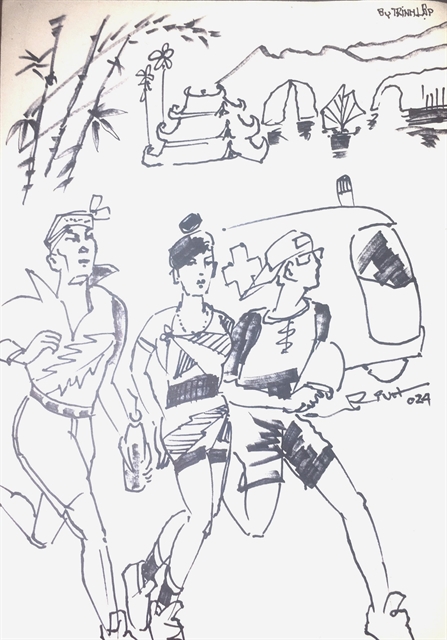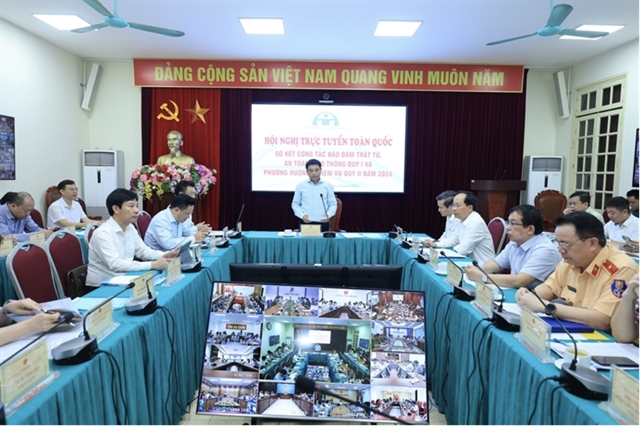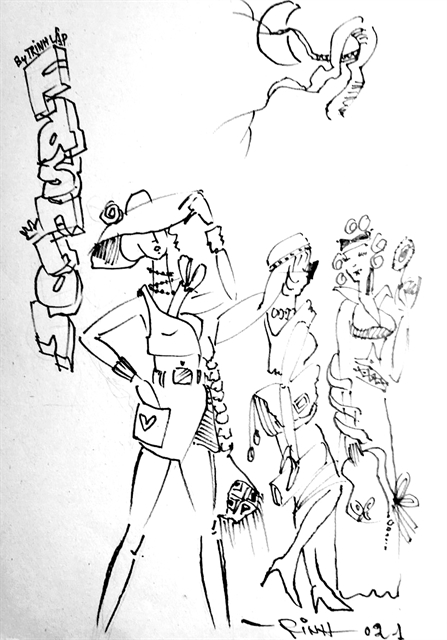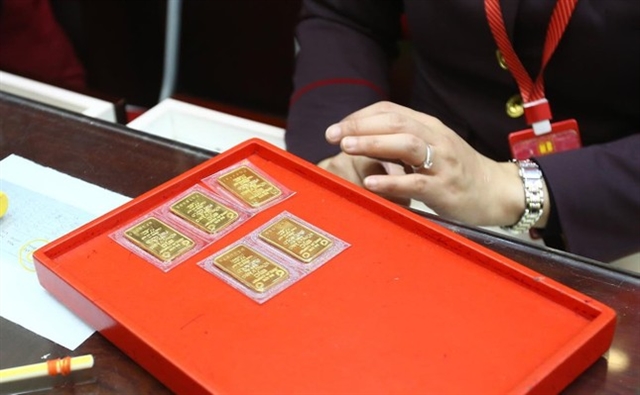 Talk Around Town
Talk Around Town

The year 2020 definitely changed our lives in different ways, particularly our shopping habits. The people with whom I have had discussions about vintage fashion and their willingness to shop for older items have all agreed that vintage fashion is taking over the market.

|
| Illustration by Trịnh Lập |
By An Phương
The year 2020 definitely changed our lives in different ways, particularly our shopping habits. The people with whom I have had discussions about vintage fashion and their willingness to shop for older items have all agreed that vintage fashion is taking over the market.
Vintage fashion, including older clothing, shoes, bags and accessories, is actually one of my biggest passions as I own hundreds of pieces of different kinds.
When I was a kid, I used to follow my mom and sister to nearby markets in search of cheap, older clothing. Now that I’m older and have less time for leisure activities, I prefer scrolling through my Instagram feed for curated vintage fashion, often higher-end pieces, from local thrift shops.
It has been quite a journey for the vintage fashion market and I was honestly surprised to see how it became one of the biggest fashion trends of 2020.
Minh Anh, 26, a friend of mine, said that she now has more vintage clothing items than newer ones.
“I only started collecting them a few years ago. I love how unique vintage pieces are, and being in the fashion industry, I embrace individuality and personal styles as they demonstrate our artistic sense," she said.
“Even though it takes time to find the perfect piece, considering that most older clothing items are … old, I feel accomplished every time I score a quality piece. I used to shop directly at Trần Hữu Trang and Bà Chiểu markets but busy work schedules have made me buy more from the Internet. The online selection is huge!” Anh told me.
“One of the cons of shopping online is that I cannot try my choices offline. But it is fine since most thrift stores where I shop are very particular about the measurements. I am able to choose fitted clothing quite often after sending them my measurements. For the price, I don’t mind going through this extra step,” another friend of mine, An Châu, 22, said.
“After shopping for luxury vintage bags, I really appreciate the affordable price tags they have to offer,” An Minh, Châu’s older sister, said, adding that she recently scored her dream bag listed at a well-known shop.
The concept of selling and buying luxury, vintage or pre-loved bags has been around for years in other places in Asia such as Japan and Hong Kong. However, it has recently been picked up by local thrift shops since 2019.
I believe that I can speak for the majority that Vietnamese buyers here were initially unsure of these high-end items since we did not know whether they were fake or not.
“I’ve been told multiple stories of fake bags being sold at grand department stores in Việt Nam and how the staff mix authentic and fake items together to fool naive customers,” Minh said.
“However, having purchased several items from high-end vintage online shops, I do trust their quality since I’ve conducted several quality checks. The price tags are amazing, usually at 30 to 40 per cent cheaper compared to new bags,” she added.
I myself have gained many interesting insights from my experience with luxury vintage bags. Not only did I know how to check their authenticity (most of the time) but I learned about the history of the bag and how it was an iconic piece at the time. As a fashion lover, I really enjoy the journey.
“Sometimes, the joy doubles when I’m able to find a rare item!” Minh added.
After a discussion with my sister, I discovered that it is not easy to become a vintage fashion seller.
According to my sister Dung Nguyễn, owner of @vintagebycohai, a popular destination for lovers of vintage and pre-loved items, the process of bidding for vintage items from Japan is tough.
“There are times when I have to wait for over a day and keep refreshing the browser to bid for a bag. My sleeping schedules are very much affected since most deals are settled at night,” she said.
Dung added that it took her about a year to become familiar with the new business.
“The luxury vintage market is relatively new, and I have multiple responsibilities. Local shoppers are willing to spend but they question anything. As I’m selling valuable items, I have to be extra careful in every step, from choosing potential items, receiving orders, bidding, and shipping them over in their best condition and form, among other tasks,” she said.
The amount of workload is substantial and the seller has to have in-depth fashion knowledge. That being said, she is confident of the growth of the market.
“I used to have doubts, but seeing how happy my customers are when receiving their orders, I feel content and inspired at the same time!” Dung added.
The vintage market is not only inspiring for both parties, the buyers and sellers, but also offers a solution for sustainable fashion.
According to many reports, fashion labels such as Zara and H&M have created more waste than our planet can handle.
“Among the 3R rule of sustainable living, reusing old merchandise helps reduce the carbon footprint on our planet. With my packaging, I also reuse old newspapers to pack my items. Isn’t this the beauty of a vintage lifestyle?” Dung said.
The vintage fashion market is not only associated with something old, dated, or on a fancier note, “rich in history”, but is also a way to a healthier future for the fashion industry.
Looking in the past might just become the way we go forward into the future. VNS









.jpg)